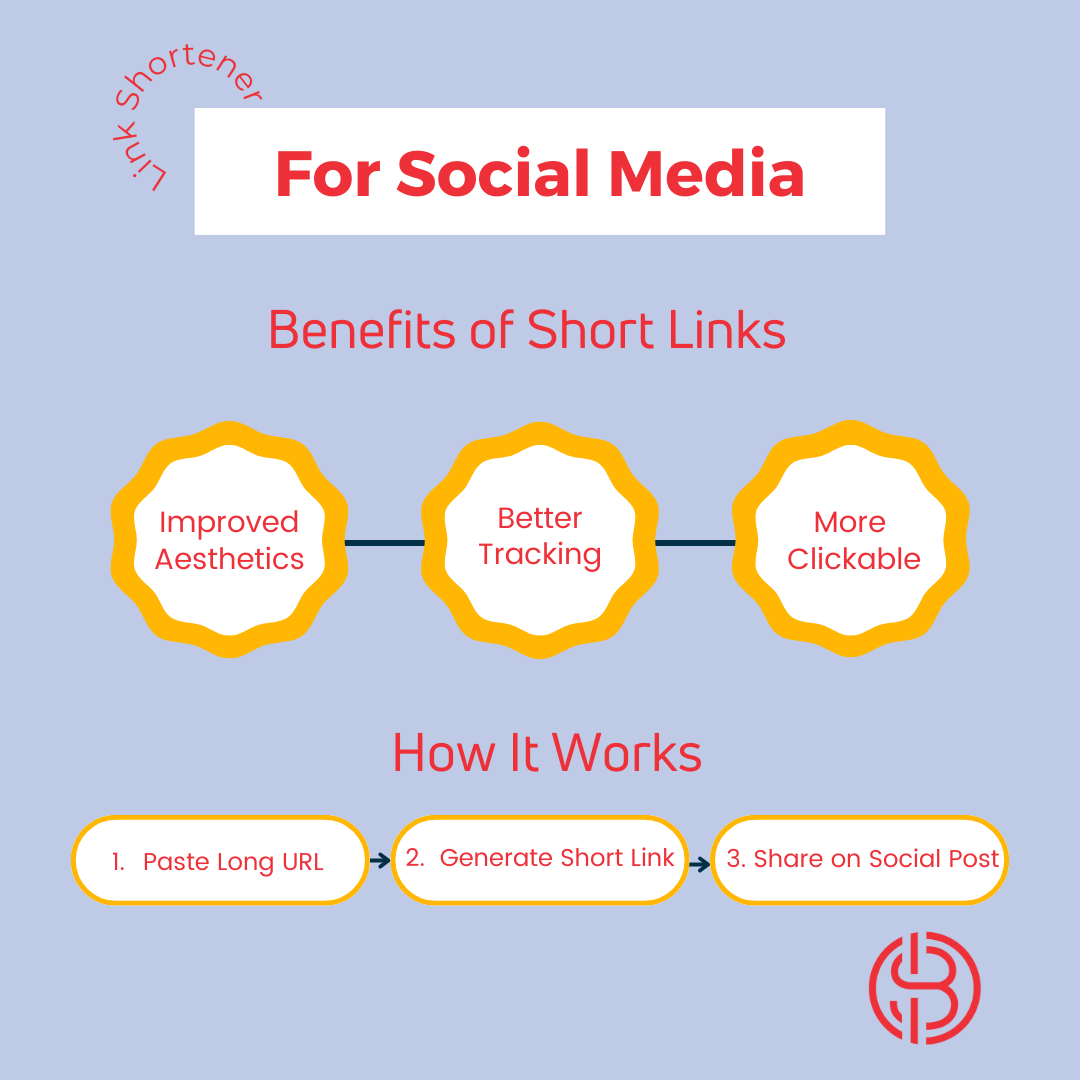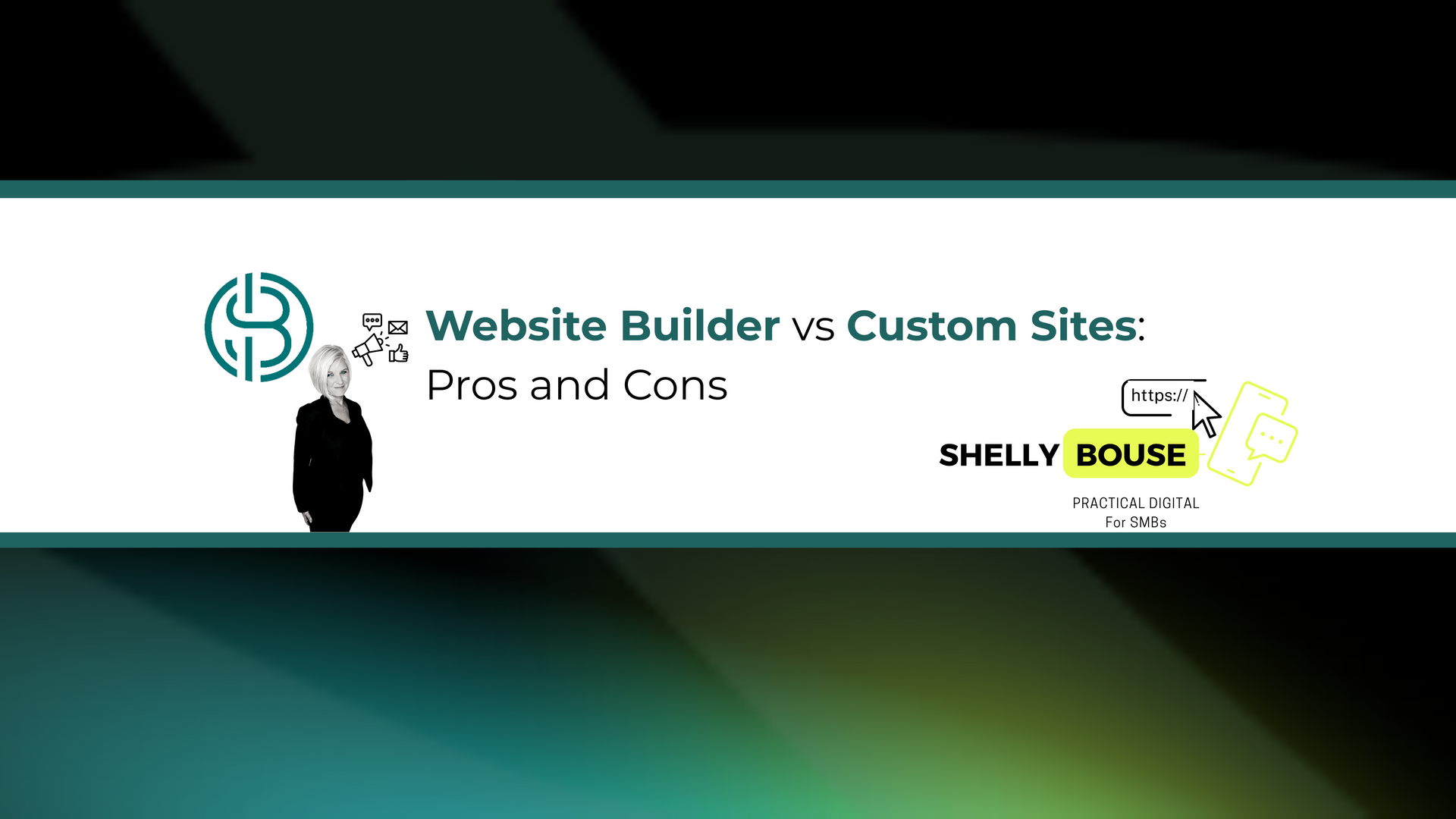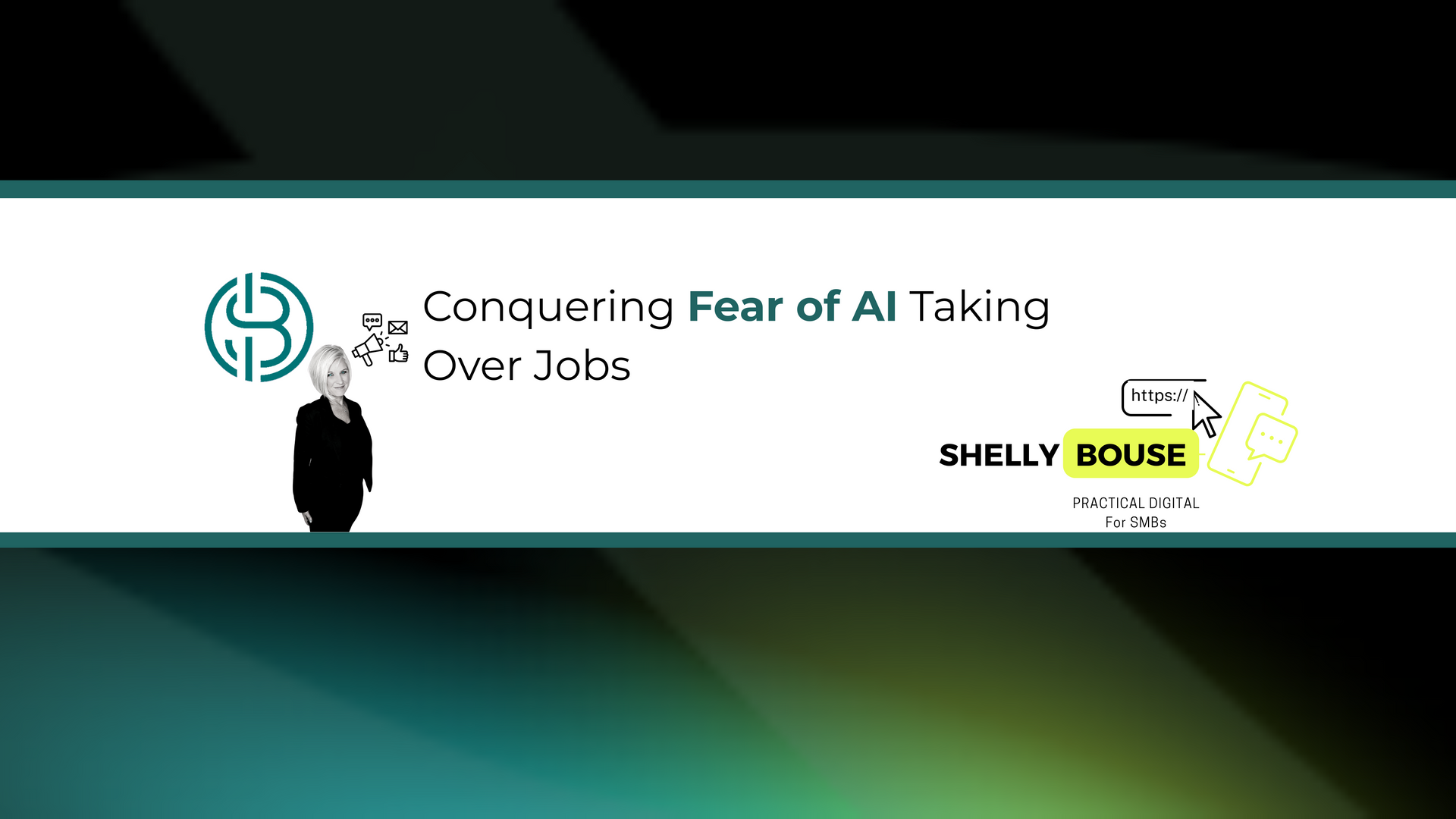Social Media Platforms: The Key to Traffic Generation
Shelly Bouse • April 14, 2025
Traffic Generation: Leveraging Social Media Platforms
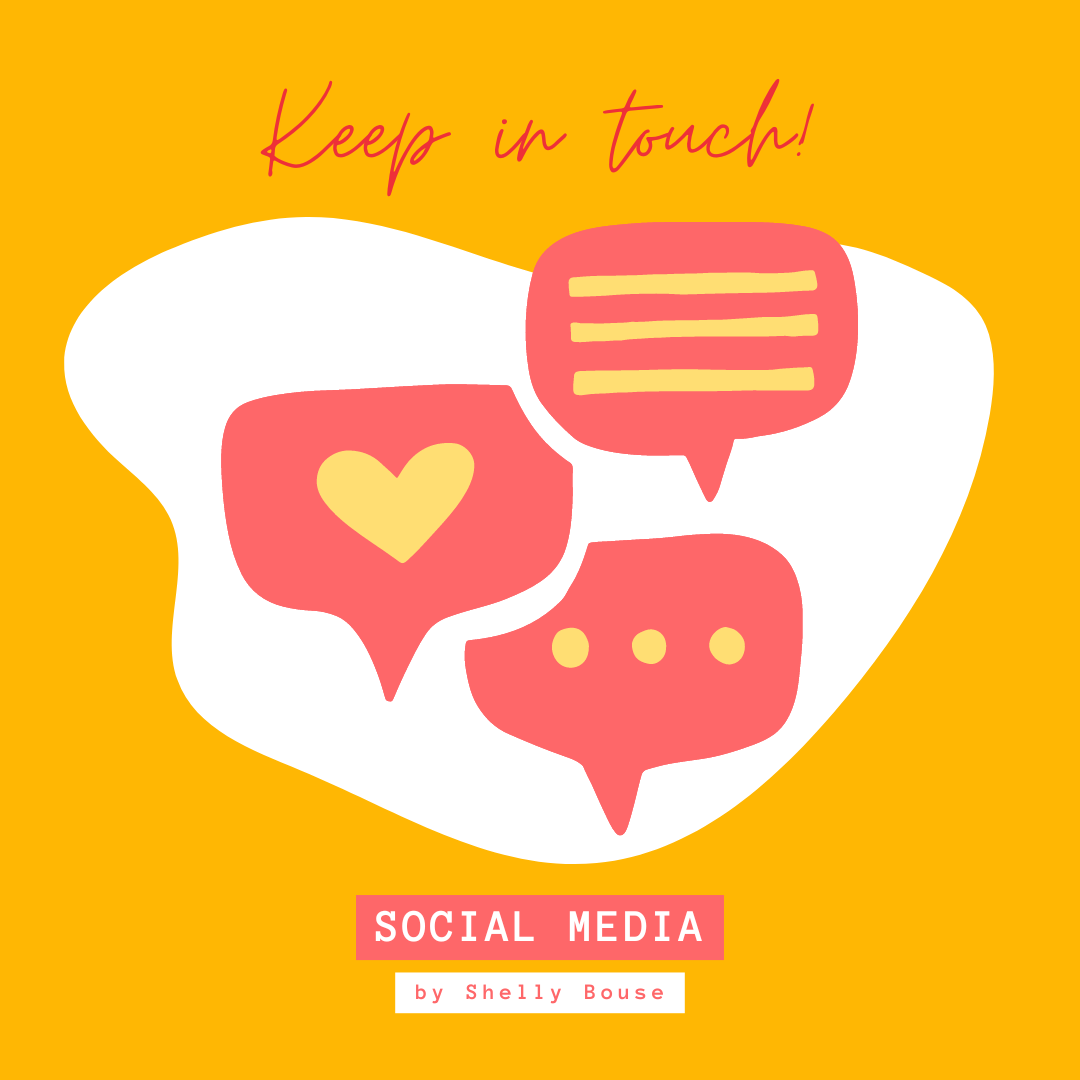

Key Highlights
- Social media is a strong tool to bring visitors to your website and connect with more people.
- It's important to know who your target audience is and understand the groups on each platform for social media marketing to work well.
- Making fun and interesting content, updating your profiles, and using both free and paid methods can help you reach more people.
- Check your social media traffic regularly to see important key performance indicators (KPIs) and improve your plan.
- Keep up with new platforms and trends to stay ahead in the changing world of social media.
Understanding the Power of Social Media in Traffic Generation
Social media is powerful because it connects people personally. Users visit these platforms for entertainment, information, and to meet others who share similar interests. By understanding how users behave, businesses can use social media to attract visitors to their websites, improve brand awareness, and boost sales.
Unlike traditional ads, which can be annoying, social media offers a natural way to engage with users. By making interesting content that connects with their target audience, businesses can catch user interest and encourage them to visit their website for more details, products, or services.
The Evolution of Social Media as a Marketing Tool
In the beginning, businesses were unsure about using social media for marketing . They mostly thought of it as a way for friends to connect, not as a way to reach new customers. But as Facebook, X, and Instagram became very popular, many saw their marketing worth.
Over time, social media changed from being just a simple way to meet people to a useful marketing place. Now, social media platforms have many tools that help businesses talk to their target audience. Businesses can use detailed analytics to understand their audience better and take advantage of advanced advertising options. Today, social media is a key part of a complete marketing strategy.
As social media keeps changing, businesses will find new ways to use it. New features like live streaming, augmented reality, and short-lived content give businesses more ways to connect with their audience. They can drive more traffic back to their websites than ever before.
Key Statistics: Social Media's Impact on Website Traffic
The numbers speak for themselves: social media users are a vast and engaged audience. With billions of monthly active users across various platforms, businesses have access to a global pool of potential customers. This presents a significant opportunity for driving website traffic and achieving marketing objectives.
Consider the following statistics:
These impressive user bases are a testament to the reach and influence of social media in today's world. It's clear that businesses can't afford to ignore the potential of these platforms for driving traffic and achieving their marketing goals. By understanding the demographics of each platform and creating tailored content, businesses can effectively reach their target audience and reap the rewards of a successful social media strategy. With Facebook being the most popular social network with 3.06 billion monthly active users and YouTube coming in second with 2.7 billion users, it's crucial for businesses to leverage these platforms for maximum website traffic.
Identifying Your Target Audience on Social Media
Before you start with social media marketing, it is very important to know your target audience. Each social media platform is different and brings in different groups of people. You need to understand who you want to reach, what interests them, how they behave, and which platforms they use. This understanding helps you create content that matters and choose the right tools for your brand, whether it be on Facebook, Instagram, X, or any other popular social media site.
By matching your social media plan with the platforms your target audience uses, you can reach more people. This way, your message gets to the right audience. Focusing on your audience is much better than trying to share your message on all platforms without knowing who you want to connect with.
Demographic Insights for Top Platforms
Each social networking platform draws a different group of users. For example, Facebook has many older users. While it's good to be on Facebook to reach more people, businesses should know that younger users, especially those under 18, are less active here.
If you want to reach younger users, you should focus on platforms like Instagram, TikTok, and Snapchat . These platforms are all about eye-catching visuals, short videos, and being part of trends and communities.
Knowing these differences helps you create content that speaks to each user group. By matching your social media plan with the user base of each platform, you can make content that gets noticed, engages users, and drives traffic back to your website.
Tailoring Content to Different Social Media Audiences
Effective social media marketing is not just about posting the same content everywhere. Each platform has its own strengths and is used differently by its audience. For example, LinkedIn targets professionals and businesses, while TikTok is popular among younger demographics. It is important to tailor content to different social media audiences, especially in Asian markets where platforms like Kuaishou are popular for short-form video and influencer marketing.
It is important to adjust your content to fit what each audience likes. This means knowing which types of content work best, the right tone, and the messaging for each platform. LinkedIn users often appreciate industry insights, job listings, and articles on business ideas. On the other hand, TikTok users enjoy behind-the-scenes videos, funny takes on current trends, and eye-catching clips. When it comes to LinkedIn, it is also important to utilize your personal profile to engage with target audiences on a more personal level. This can include posting thought-provoking, relevant content about topics in your niche and connecting with other top voices in your industry.
By understanding these differences and changing your social media marketing for each platform, you can improve engagement and reach more people. A one-size-fits-all strategy does not usually work well in social media, so spend time learning about your audience on each platform. This will help you create content that really speaks to them.
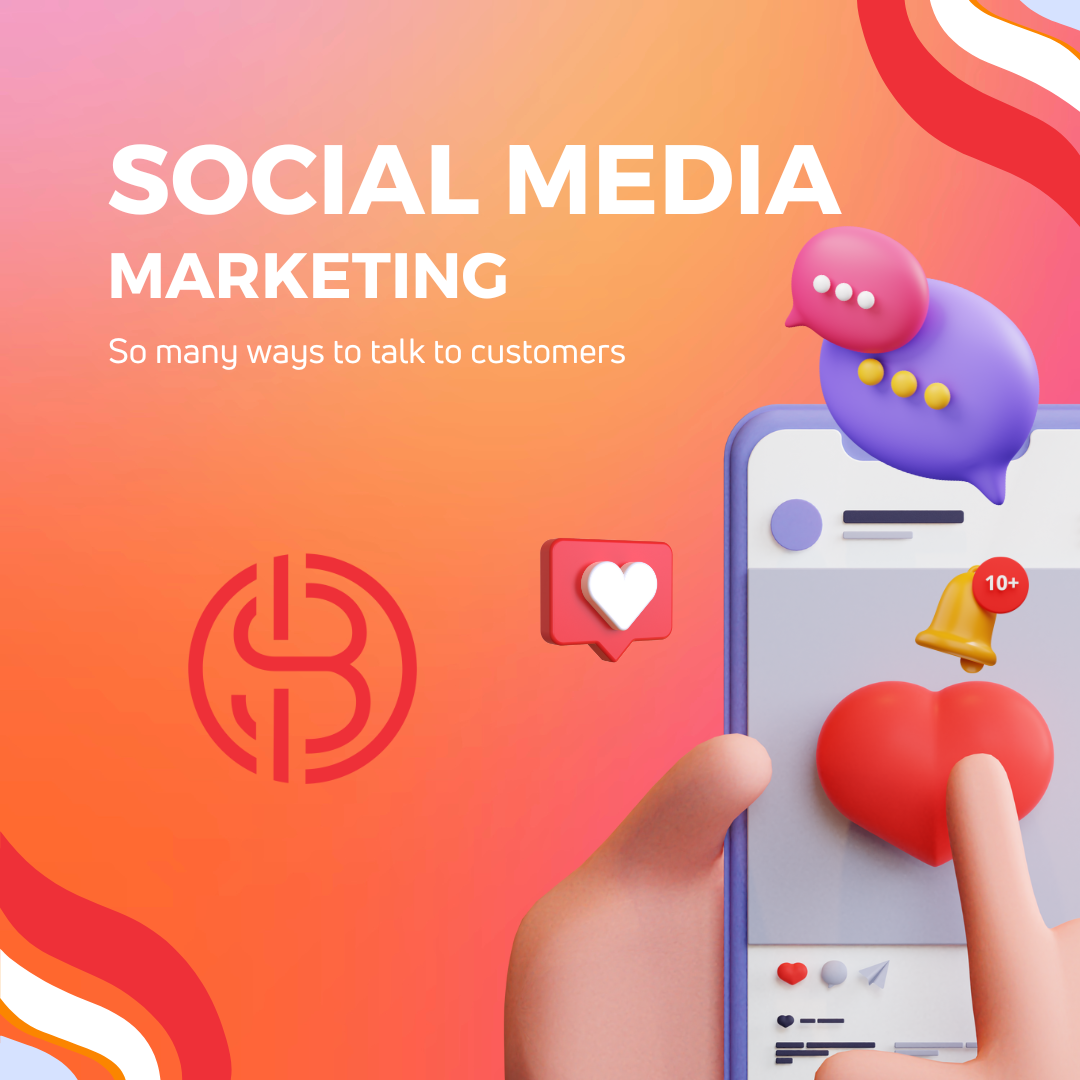

The Most Effective Social Media Platforms for Traffic Generation
Choosing the right social media platforms is very important for getting more traffic and taking your social strategy to the next level. While having a presence on many platforms can help, it is crucial to focus on those that match your target audience and goals. For a lot of businesses, Facebook, Instagram, X, LinkedIn, and Pinterest are good places to start.
Each of these platforms has many active users. This gives you a great chance to connect with potential customers. However, the methods you use to make the most impact can change based on the platform and its users. Let’s take a closer look at each platform, including Threads , and share some effective ways to drive traffic in these early days of the platform.
Facebook: Strategies for Maximized Engagement
Facebook is one of the most popular social media platforms in the world. It is a strong tool for bringing in traffic. Because of its diverse user base and marketing features, businesses can reach their target audience and meet their marketing goals .
To get more engagement on Facebook, use different kinds of content. This includes text posts, images, and video content. Live video is especially useful for real-time engagement. It helps businesses connect with their followers on a more personal level. You can also boost interaction by asking questions, hosting contests, and replying to comments.
Don’t forget to use Facebook Messenger , the platform’s messaging app. You can use Messenger for customer service, answering questions, and sending targeted promotions. This direct line of communication helps build better relationships with potential customers and leads to more sales.
Instagram: Leveraging Visual Content for Higher Traffic
Instagram is a great place for businesses to use visual storytelling. Many users, especially younger people, are active on this platform. This makes it perfect for getting more traffic and building brand awareness.
To do well on Instagram, focus on making high-quality and eye-catching content . You can share beautiful product photos, behind-the-scenes looks at your business, or content made by your customers. Instagram users love good visuals. Use features like Stories, Reels, and live streams to interact with your followers in real time and show off your brand’s personality.
Think about adding social media advertising to your Instagram plan. Instagram offers targeted advertising options. This means you can reach specific groups of people based on their interests and behaviors. This way, your message will be seen by the right audience. This can help you expand your reach, gain more traffic, and boost conversions.
X: Utilizing Hashtags and Trends for Visibility
X , formerly know as Twitter, is a fast platform that gives real-time updates. It offers a special way for businesses to talk, share quick information, and connect with their audience personally. Because of its character limit, X makes sure messages are brief and strong.
To get noticed on X, use hashtags wisely. Look for the right hashtags in your area and add them to your tweets. This will help users find your content easily. Also, pay attention to trending topics and join these talks when you can, sharing useful ideas and connecting with more people. Don't forget to also share your own content, as well as others, to provide value and join the conversation. Just be sure to monitor the app and your audience to make sure your investment is paying off.
Don’t overlook how helpful retweets can be. You can boost retweets by asking questions, running polls, or sharing important content that your followers will like. The more people share your content, the more you will reach, helping to increase your visibility, brand awareness, and traffic to your website.
LinkedIn: Networking and B2B Traffic Driving Techniques
LinkedIn is often seen as the main social networking site for professionals. It offers a special chance for businesses, especially in B2B, to connect with industry experts, leaders, potential clients, and future employees. Unlike other social media platforms, LinkedIn is made just for professional networking. This makes it a great place to build trust and form relationships in your field.
To use LinkedIn for generating traffic, make sure your company profile is complete and current. Share helpful insights about your industry, join in on relevant group chats, and think about writing articles on LinkedIn’s publishing platform. This can help you become seen as a leader in your area.
LinkedIn is also a useful tool for finding new employees. By posting job opportunities, showcasing your company culture, and interacting with potential candidates, you can attract the best talent and strengthen your employer brand.
TikTok: Unleash Your Creativity and Reach a New Audience
TikTok has taken the social media world by storm with its short-form video content and engaging challenges. It's not just for dancing teenagers anymore - businesses are also leveraging TikTok to showcase their products or services in a fun and entertaining way.
To make the most out of TikTok, focus on creating authentic and creative content that resonates with your target audience. Utilize popular trends, challenges, and sounds to increase your reach and engagement. Collaborate with influencers or other brands to tap into their followers and expand your reach.
Pinterest: Driving Traffic Through Visual Discovery and Pins
Pinterest is a platform where people, known as “Pinners,” can discover inspiration, ideas, and products. It is great for businesses that have attractive products or services. Many users use Pinterest to plan their purchases and find new brands.
To get more visitors from Pinterest, you should create high-quality Pins. These Pins must highlight your product or service in an interesting way. Don’t forget to add important keywords in the description to make it easy to find. Always link your Pins back to your website or specific landing pages to increase traffic and sales.
Another good idea is to create Pinterest boards that match your brand and the interests of your target audience. Arrange your boards around specific themes and keep adding new, relevant Pins. This will help keep users engaged and encourage them to come back. By offering value and inspiration, you can use Pinterest as a social platform to increase traffic to your website and boost brand awareness.
Creating Engaging Content for Social Media
Creating interesting content is very important for success on social media. In a busy online space, you need strong visuals, thought-provoking questions, and a good understanding of what your target audience likes. The aim is to make content that catches users' eyes, making them stop scrolling. You also want them to like, comment, and share it to reach even more people.
Social media is mainly about connecting with others. So, work on building a community. Respond to comments, ask questions, and start conversations with your audience. By making a friendly and engaging space, users will keep coming back for more.
Crafting Shareable Posts and Visuals
In the busy world of social media, making shareable content is important for reaching more people naturally. Social media users see a lot of information every day. So, it's important to create posts and visuals that catch attention and make people want to share.
First, make your content look good and easy to understand. Use engaging visuals like high-quality images, videos, or animated GIFs. These can help your content get noticed and shared more often. Also, think about how your posts look as a whole. They should match your brand's style.
Second, write interesting captions that grab attention, stir feelings, or encourage actions. You can ask questions that make people think, show behind-the-scenes moments of your business, or share helpful insights that connect with your target audience. A smart caption can turn your post into something people want to share, not just read.
Video Content: Tips for Viral Marketing Campaigns
In today's fast digital world, people have shorter attention spans. As a result, video content is becoming very powerful in social media marketing. Attractive visuals and strong stories can grab attention and make a lasting impression. This makes video marketing a great tool for businesses wanting to grow brand awareness and bring in more traffic.
To create successful viral marketing campaigns, it's important to use emotion. Videos that make people feel joy, humor, surprise, or inspiration are more likely to be shared and remembered. So, try to make videos that connect with your audience in a meaningful way. This goes beyond just selling your product or service.
It’s also key to improve your video content for each platform. Each platform has its own tech needs, audience expectations, and sharing habits. For example, a short, catchy video that works well on TikTok might not do as well on YouTube, a popular video sharing platform. YouTube users usually want longer and deeper content, making it a great platform for B2C marketing, community building, influencer marketing, live streaming, and targeted advertising, especially for younger demographics. Knowing these differences is very important for getting the best reach and impact from your video marketing campaigns.
Interactive Content: Polls, Quizzes, and Live Sessions
In the fast-moving world of social media, grabbing the quick attention of users needs more than just regular posts. This is where interactive content shines. It encourages people to get involved and helps create a community feel. Tools like polls, quizzes, and live sessions on various topics are great for increasing engagement, getting feedback, and making a lasting impression on your audience. Polls are a great way to start conversations and get opinions. They make your followers feel valued. You can ask fun questions or seek feedback on a new idea. Polls not only gather important views about your audience's likes but also add some fun to your social media feed.
Quizzes take this interaction further. They play on people's curiosity and love for discovering more about themselves. Quizzes can help generate leads, support products, or just entertain. When you create quizzes that match your brand and appeal to your target audience's interests, you can boost engagement and drive results.
Need Content Ideas? Try the Social Media Content Idea Generator Tool
Optimizing Your Social Media Profiles for Traffic Generation
Your social media profiles are important online spaces for your brand. They are like virtual stores. Just like a real store needs a nice outside appearance, your social media should look good and draw people in. You can't just fill out your bio and leave it like that.
Think of your social media profiles as things you should keep changing. Keep them updated with new content, eye-catching images, and words that matter. Make it easy for potential customers to find the details they want. This helps them take action, like visiting your website, buying something, or connecting more with your brand. Don't forget to optimize your about section on your business page, including a description of your business, a link to your site, your hours, your phone number, etc. This will make it easier for customers to find and engage with your business on platforms like Facebook.
Bio Optimization: Making Every Word Count
In today's quick-moving world of social media, making a good first impression is very important. Your bio is often the first thing users see when they come across your brand on a social media app. So, it's crucial to make every word matter.
You need to create a short and clear bio that shows what makes your brand special. Focus on your unique points, show your brand's personality, and use strong action words to get users to engage.
Think of your bio like a quick pitch – you only have a short time to grab attention and create a memorable impression.
Include relevant keywords that your target audience might use when looking for businesses similar to yours. These keywords can help your profile show up in search results on the platform, making it easier for potential customers to find you. But remember not to overuse them. Your bio should still feel natural and authentic.
The Role of Links in Social Profiles
In social networking, getting traffic and turning followers into customers is very important. It's not just about writing a clever bio or posting interesting content. One thing many people forget is the smart use of links.
Your social media profiles should connect your online presence with your website or other important pages. Adding links in your bio and posts helps you take advantage of the interest you have created. It can guide users to engage more with your brand, check out your products or services, or benefit from special deals.
You should also think about using link shortening tools. These tools can give you helpful information about how many clicks your links are getting. This can help you see which links your audience likes and how well they are bringing in traffic. With this information, you can refine your future link-building plans. This way, you can make the most of every chance to guide users to where you want them to go.

Strategies for Growing Your Social Media Presence
Building a strong social media presence takes time. It does not happen right away. You need a clear plan and different methods to make it work. It is not just about sharing posts and waiting for good results. You must know your target audience. You should tell interesting stories and connect with your followers. You also need to keep improving your plan using information and insights.
To turn your social media account into a lively community, think about using these strategies:
Consistency is Key: Planning Your Posting Schedule
In the fast-changing world of social media, where algorithms play a big role and many people compete for attention, posting regularly is not just a good idea—it’s essential for success.
When you post consistently, your content reaches more of your target audience. This helps to boost engagement and get more people interested. If you post at the same time, your followers will look forward to your updates. This builds a stronger bond and shows them they can rely on you.
But being consistent is more than just clicking "publish" at the same time every day. It means making a content calendar that fits your overall social media plan. It should also pay attention to what your target audience likes on each platform.
Engagement Strategies: Building Community and Trust
In today’s online world, people face many choices. To stand out, it’s important to build trust and create a community around your brand. Social media marketing gives a great chance to connect with your audience in a real way. You can move past just selling and engage them authentically.
One good way to build a community is by using your social media as a place for two-way communication. Encourage your audience to talk by asking questions that need more than a yes or no answer. Make sure to reply to comments and recognize feedback, whether it’s good or bad. When you show that you care about their thoughts and experiences, it can help create trust and loyalty.
Additionally, think about making special hashtags or holding online events, like live Q&A sessions or virtual workshops. These activities help your followers feel like they belong. They also allow people to connect with your brand and each other. This builds a stronger bond within your community.
Collaboration and Cross-Promotion with Influencers
In today’s online world, influencer marketing is very important for reaching your target audience.
Working together with influencers can greatly increase your brand’s visibility and credibility. Influencers have strong communities and are trusted voices. They can connect with consumers personally, boosting engagement and helping with conversions.
Teaming up with influencers who share your values and appeal to your target audience can be very helpful. Cross-promotion efforts like creating shared content, sponsored posts, or joint giveaways can help you reach the influencer's followers. This way, you introduce your brand to new potential customers.
It’s important to work with influencers thoughtfully. Focus on building real relationships, not just business deals. Selecting influencers who genuinely believe in your brand will make the partnership feel more natural and will be better received by their followers.
Analyzing Your Social Media Traffic: Tools and Metrics
Analyzing your social media traffic is very important. It helps you see what is working and what needs to be better. This knowledge can help you improve your strategy for better results. Without data to guide you, your social media work may be random and not very useful.
There are many tools and measures to check how well you are doing on social media. Using these tools correctly lets you watch key performance indicators (KPIs), understand how your audience feels, and make smart choices to improve your strategy for the best results.
Key Performance Indicators (KPIs) to Track
Key performance indicators (KPIs) to watch in social media marketing include the engagement rate, conversion rate, click-through rate, and share of voice. These numbers help you see how well your campaigns work and how they affect your target audience. It is important to track the growth of active users, monthly active users, and user base on different social media platforms. Looking at video content metrics, like views, likes, shares, and comments, gives you useful insights. Also, tracking the success of social media advertising is vital. You should check metrics like cost per click, conversion rate, and return on investment to improve your strategy.
Utilizing Analytics to Refine Your Strategy
Social media analytics offer a lot of data. When you understand this data well, it can greatly help improve your strategy and boost your return on investment (ROI). By looking closely at the numbers from your social media metrics, you can find hidden trends and utilize them in various ways to refine your strategy. This includes identifying trending platforms, understanding audience behavior, and making smart choices to improve your content, posting times, and general plan.
For instance, checking your engagement rate can show which types of content your followers like most. Do they engage more with videos, images, or text posts? Are there specific topics that spark more conversation? These details can help shape your content strategy. They ensure you share engaging material that gets attention and prompts interaction.
In addition, looking at your website traffic data can reveal which social media platforms bring the most valuable visitors to your site. Knowing which platforms work best for reaching your target audience and gaining leads allows you to use your resources better. This way, you can focus more on the channels that give the best ROI.


Paid Social Media Strategies to Boost Traffic
While organic social media strategies are very important, paid social media advertising can help a lot too. It can help you reach more people, get faster results, and find new customers who may not know about your brand.
Paid social media strategies include many things, like boosted posts, sponsored content, and targeted ad campaigns. By using paid social media advertising, you can reach people outside your current followers. You can focus on certain groups of people based on their demographics, interests, and behaviors. This helps make sure your message gets to the right people at the right time.
Understanding Paid Advertising Options on Different Platforms
Each social media platform has its own special paid advertising choices. These come with different strengths and ways to target people. It is important to know how each platform works. This knowledge helps you pick the right tools for your marketing strategy and your target audience.
For example, Facebook has a strong advertising system. It offers detailed targeting options. You can reach users based on who they are, their interests, their behaviors, and even big life events. In recent years, Facebook has undergone a demographic shift – yet its influence in the social media sphere remains unparalleled. Instagram is great for visual ads. It focuses on photo ads, video ads, and Stories ads. This makes it perfect for showing off products, especially to younger people.
LinkedIn is famous for professional networking. It has advertising options aimed at B2B marketing. You can target users based on things like their job titles, their industry, the size of their company, and their level in the company. Knowing the strengths of each social media platform's paid advertising options is key for picking the right tools to meet your marketing goals.
Crafting Compelling Advertisements for Target Audiences
In the busy world of social media advertising, users see many messages that compete for their attention. To reach your campaign goals, you need to create ads that stand out. Ads that look like everything else are unlikely to work well.
First, know your target audience. What do they want or need? What issues do they face? What drives them? When you understand your audience, you can make your message connect with their interests and needs.
Second, make your ads visually appealing and attention-grabbing. Use a great image, a fascinating video, or an interesting carousel ad. Your creative content should catch the eye quickly and encourage people to find out more. Put effort into using good visuals and strong writing to ensure your ads shine.
Overcoming Common Social Media Marketing Challenges
Social media marketing comes with its own set of challenges. There are algorithm changes that affect how many people see your posts. Plus, there is the ongoing pressure to make content that grabs attention. Businesses deal with different problems when trying to succeed on social media. But if you know these common challenges and act early, you can lessen their effects.
A major challenge for social media marketers is the changing algorithms. Social media platforms often change their algorithms. These updates can reduce how many people see your content. This makes it harder to reach your target audience.
Algorithm Changes and Content Visibility
Social media algorithms control what content people can see. They decide which posts are shown and who gets to see them. These algorithms are always changing. They adapt to new trends, how users act, and what platforms want. For social media marketers, keeping up with these changes is very important. This helps them maintain visibility and make sure their messages reach the right people.
One big challenge from these changes is the drop in organic reach. As platforms focus more on paid ads and user engagement, businesses notice that fewer followers see their organic posts. This makes it harder to depend only on organic reach to reach marketing goals.
To deal with the drop in organic reach, businesses need to change their social media strategies. This can mean spending on paid ads, trying out new content types, or using techniques that boost engagement. For example, they can ask questions, run contests, or host live Q&A sessions.
Dealing with Negative Feedback and Online Reputation Management
In today's connected world, online reviews and social media can affect a business's reputation deeply. Managing your online reputation is now a must, not an option. Negative feedback can travel quickly on social media, which can hurt your brand and shake customer trust.
You can't make everyone happy all the time. However, responding to negative feedback fast and in a professional way is very important. If you ignore bad comments, they won't just vanish. Often, it makes things worse and shows that your brand does not care about customer worries.
It's very important to have a simple plan for dealing with negative feedback. First, acknowledge the feedback. Next, apologize for any trouble caused. If it makes sense, offer a solution or take the conversation offline. Being open and truly wanting to fix the problem can help lessen the damage. It can also change a bad experience into a good one.
Look at traffic metrics and consider paid options to better your reach. You may face challenges like changes in algorithms and managing feedback, but these are all part of achieving success on social media. If you use these strategies well, you can unlock the full power of social media. This will help increase website traffic and meet your marketing goals.
Frequently Asked Questions
What are the best times to post on social media for maximum visibility?
The best times to share content on social media can change based on the platform and your user base. Usually, weekdays during working hours get more engagement. Use the analytics for the platform to find out when your audience is most active.
How do I measure the ROI of my social media traffic?
You should check the return on investment (ROI) of your social media visitors. Track important key performance indicators (KPIs) like website visits, new leads, and conversions from your marketing campaigns. Use analytics tools to link conversions and monitor your progress towards your goals.
Can I drive significant traffic from social media without paid advertising?
You can bring in a lot of traffic without using paid ads. Focus on natural ways to do this. Create quality content that people want to share. Also, engage with your audience regularly. Use relevant hashtags to help your content reach more people.
How often should I engage with my audience on social media?
Engage with your audience on social media often. Reply to comments, messages, and mentions quickly. How often you engage may depend on your platform and audience. However, interacting daily is a good way to start building your community.
What are the emerging social media platforms to watch for traffic generation?
- Watch out for new platforms like Twitch, Discord, and Clubhouse.
- These platforms focus on live streaming, community engagement, and specific interests.
- They offer great chances to bring in more traffic as they grow and change.

